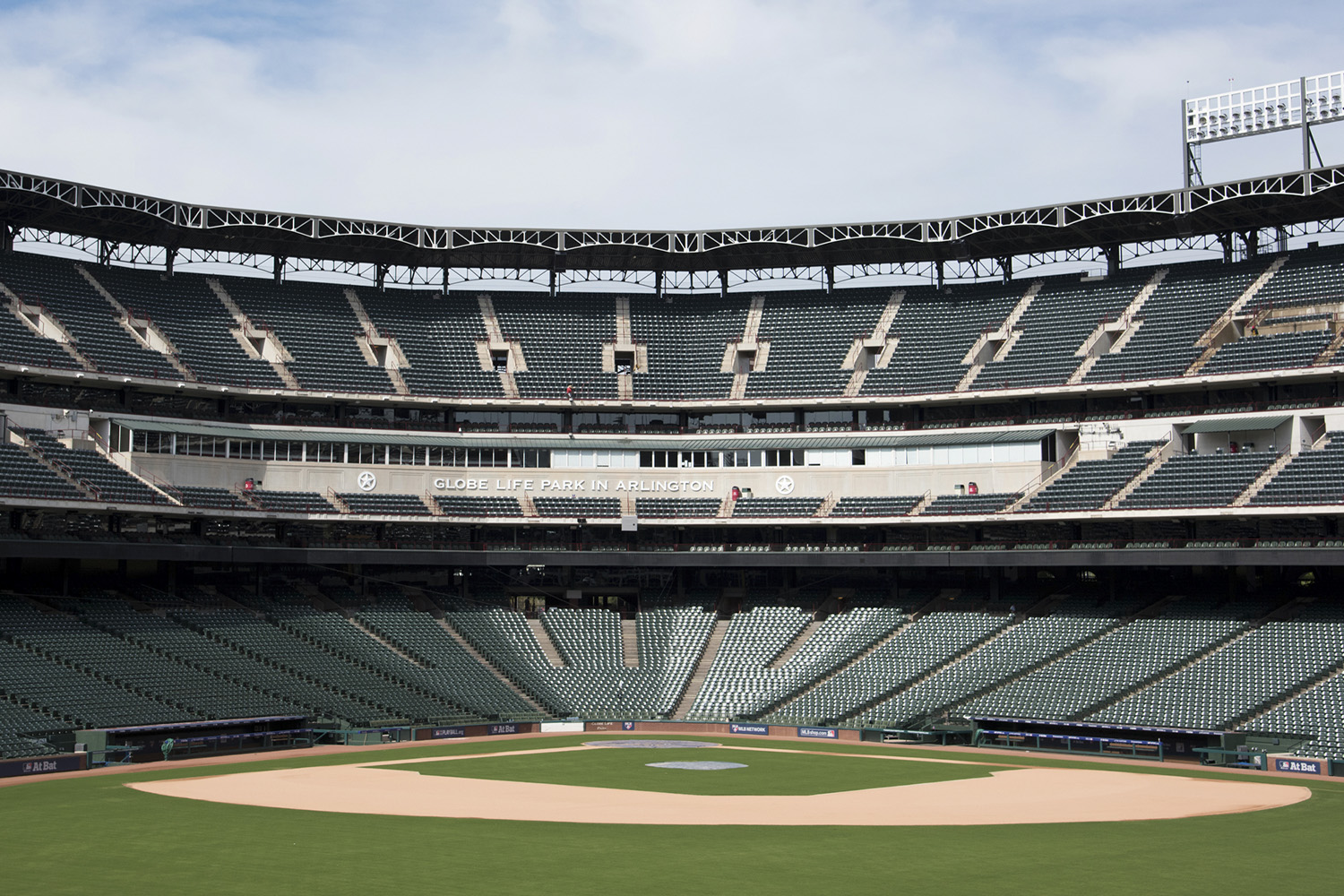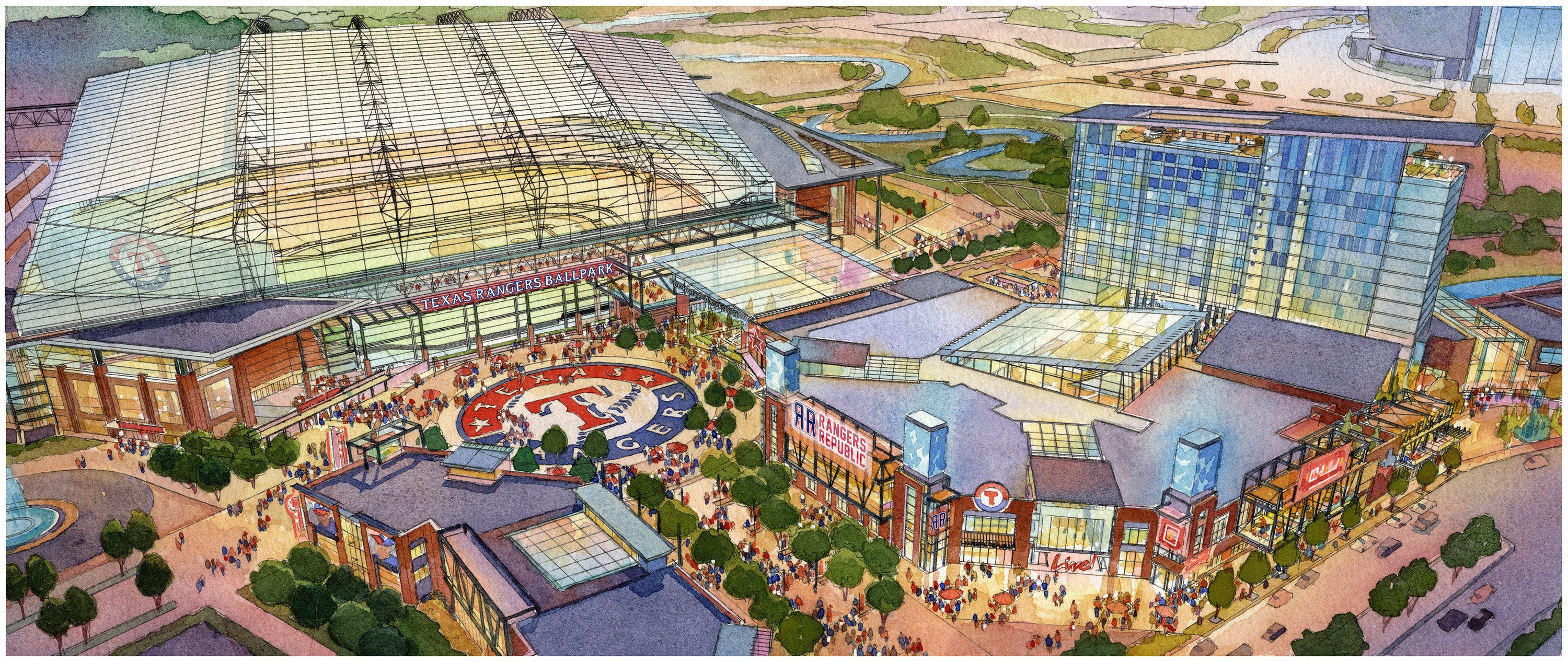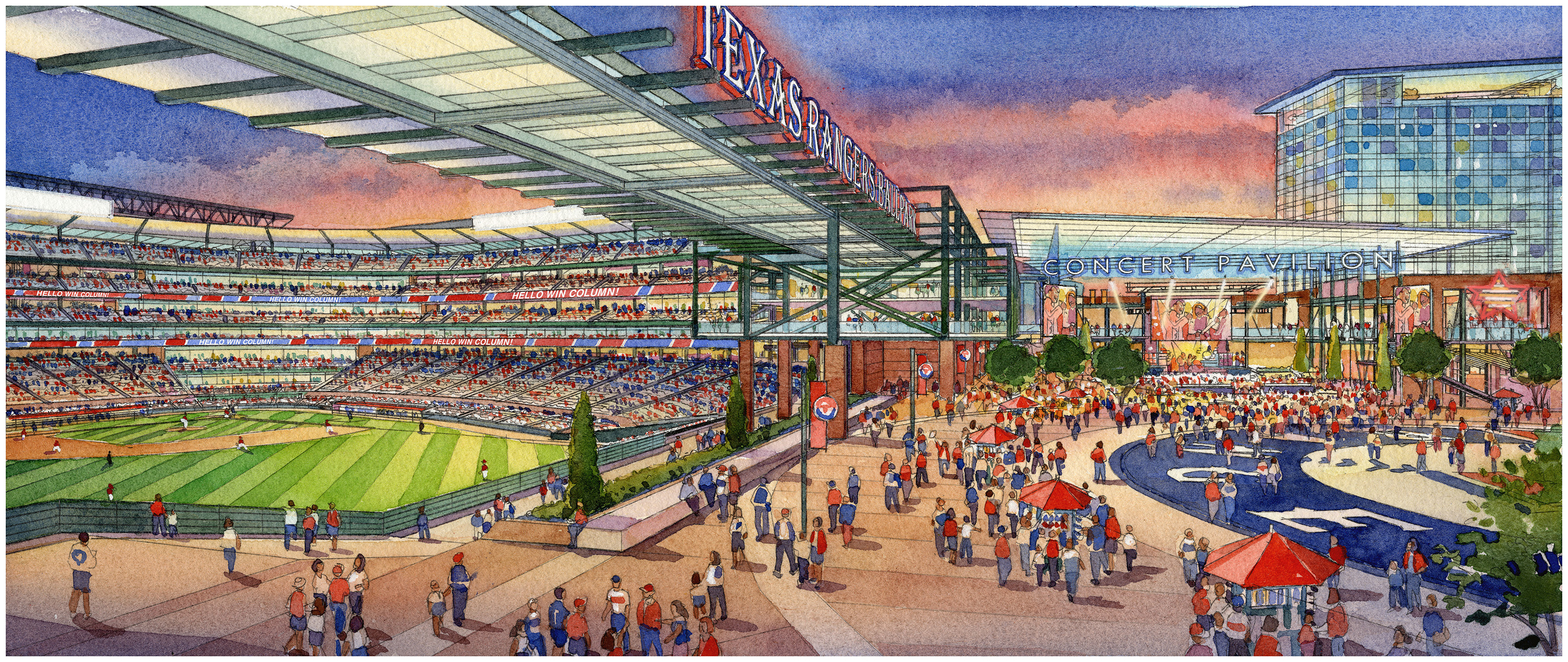In Arlington, voters debate paying to replace Rangers ballpark
/https://static.texastribune.org/media/images/2016/10/27/TexasRangers_exterior_CN_TT.jpg)
DALLAS — In the 1990s, the Dallas Cowboys tried to get voters in Irving, where the team played, to leave the regional transit system and instead spend that sales tax revenue on upgrading Texas Stadium. Voters stuck with Dallas Area Rapid Transit and the Cowboys eventually left for nearby Arlington, who helped finance a new football stadium.
Now voters in the North Texas suburb that wooed away America's Team are wondering if they are about to be the one left behind as they decide whether to give the Texas Rangers $500 million in sales tax revenue to help replace the 22-year-old Globe Life Park.
In many ways, the Nov. 8 election really swings on whether Arlington residents believe the Rangers will eventually leave Arlington if they reject a deal worked out between the team and elected city officials. And if estimated economic impacts of a new ballpark are worth the public investment.
Arlington Mayor Jeff Williams, chief supporter of the bond measure, predicts the Tarrant County city will lose the team to another municipality if opponents prevail next month. And he argues that will also cost the city the existing ballpark, $77 million worth of annual economic impact and 2.5 million visitors each year.
“Our future here is secured if we vote yes,” he said.

Yet a grassroots political action committee that opposes the proposed deal foresees a different outcome, especially since the Rangers are slated to remain at Globe Life Park in Arlington through 2024. Citizens for a Better Arlington thinks that gives the city and the team time to come up with a deal that keeps the Rangers, but involves a smaller public contribution.
“They will renegotiate again if this gets turned down,” said campaign treasurer Richard Weber. “I don’t believe they’re going.”
Meanwhile, the team is doing little to settle the divergent forecasts. Rob Matwick, Rangers executive vice president of business operations, said there haven’t been discussions about what will happen if the bond measure fails.
“We’ll see what the future brings, but it has not been our focus right now,” he said.
Under the deal before voters, the city’s contribution to an estimated $1 billion ballpark is capped at $500 million. That will come from a half-cent of the city’s sales tax rate. The Rangers are responsible for the rest of construction costs.
The team will get to count admission and parking taxes toward its contribution. The Rangers are on the hook for any costs that exceed the current $1 billion construction estimate. But if costs exceed $1.25 billion, the city must help the Rangers figure out how to drive the price tag down or identify new revenue sources or the team can walk away from the deal.
The city last year agreed to contribute up to $100 million in cash and tax abatements on a $250 million mixed-use development adjacent to both the current and potential new ballparks. Construction on Texas Live!, a partnership between the Rangers and Baltimore-based Cordish Companies, began this week.

Williams called the team a "key anchor" in the city's economy that needs to be secured for decades.
“We have so much at stake here in Arlington,” he said.
Roger Noll, an economic professor at Stanford University, said votes on publicly subsidized sports stadiums often involve promises of economic spillover. Such arguments help officials sell the deals to voters who aren't necessarily sports fans. But, he said, modern sports venues don't benefit other businesses as much as the teams themselves because they are built to encourage spending on food, drinks and fan memorabilia inside their own walls.
"People can get anything they want at the stadium," he said.
The Rangers are largely bankrolling the political action committee supporting the ballot measure. The group, called Vote Yes! Keep the Rangers, raised more than $615,000 this summer and early fall. The team contributed $550,000 of that. Citizens for a Better Arlington, meanwhile, brought in more than $7,600 during the same period.
Matwick said fans’ top reason for not attending games at the open-air Globe Life Park is how hot the venue gets during the brutal Texas summers. The proposed new ballpark features a retractable roof that would allow fans to sit in air-conditioning.
“For any baseball team, June, July and August represent typically half your season,” Matwick said.
But the replacement stadium could fit fewer fans than its predecessor. The city’s master agreement with the team only requires 38,000 seats at the new ballpark. Globe Life currently has more than 48,000 seats.

Matwick said that the city and the team began serious negotiations after word got out that Dallas officials had been talking to the Rangers about relocating to that city when its current deal with Arlington expires. Dallas Mayor Mike Rawlings told the Fort Worth Star-Telegram those talks were “serious” but also “exploratory at best.”
“When those stories and reports began to surface, it got the city’s attention and Arlington, to its credit, said the Rangers are too important to us,” Matwick said.
Weber said he’s a Rangers fan and doesn’t want the team to leave. He just thinks the team would be willing to chip in more money if voters made clear they think $500 million is too much.
“If we turn this down, they can make a better offer,” he said.
Christopher Connelly of KERA contributed to this story.
Read related Tribune coverage:
- Last year, Gov. Greg Abbott agreed to spend up to $2.7 million in taxpayer funds to bring the barrage of blood, sweat and spandex that is WrestleMania to Texas.
- Critics have long questioned the state's financial support of Formula 1 racing in Austin.
- While many NFL teams have small followings in Mexico, they do not compare to the Dallas Cowboys' Mexican fans, who have been known to take overnight bus trips through roads traversed by violent drug cartels to make it to games.
Information about the authors
Learn about The Texas Tribune’s policies, including our partnership with The Trust Project to increase transparency in news.
/https://static.texastribune.org/media/profiles/2025_Brandon_Formby_2x3.jpg)